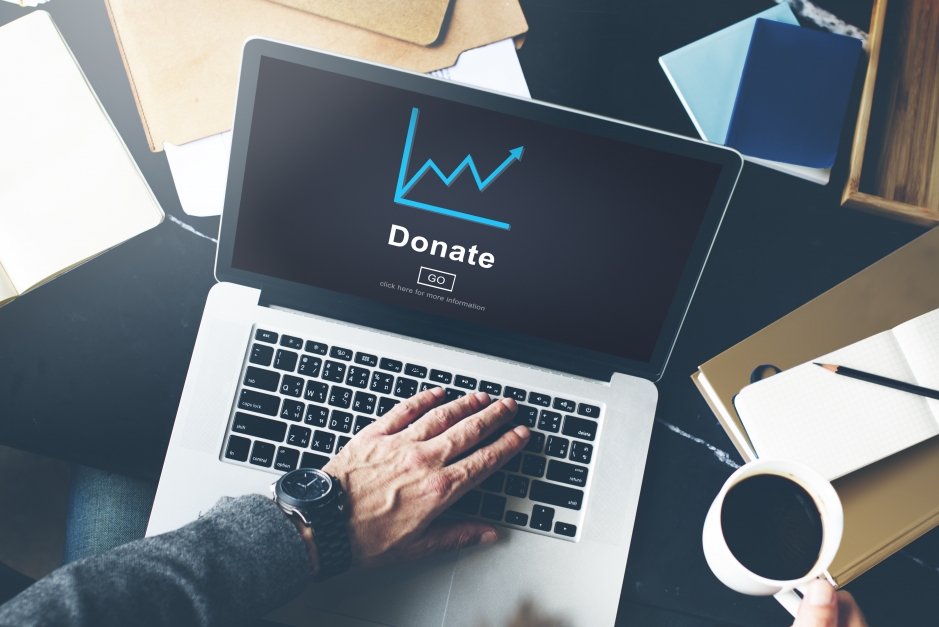Picture this: one of your supporters is scrolling through their social media pages when your newest peer-to-peer campaign or crowdfunding post catches their attention. Eager to help, they log into your website, locate your donation page, and submit their gift. The process seems simple enough, and you might assume that simply setting up a donation page is the end of your worries about the donation process.
However, while you may know how online giving works for your donors, are you as confident in your knowledge of what goes on in the backend of donation payment processing?
Donation payment processors are behind-the-scenes tools necessary for collecting online donations. They are the systems responsible for the storage of user data, the facilitation of payment methods, and the ultimate act of giving. Without a payment processing system, digital donations would be impossible.
Of course, understanding these tools can be a bit tricky for someone without extensive backend technical experience. After all, most nonprofit professionals are more familiar with the customer-facing donation page itself, which users can actually see and interact with as they submit their gifts.
In this short guide, we’d like to help you better understand this essential, unseen mechanism in the donor journey by studying the following fundamentals and donation processor best practices:
- What is a Payment Processor?
- The Importance of Keeping Donor Data Secure
- Optimizing the Donor Experience
With this resource, you will not only be able to confidently navigate your own payment processing system, but also increase revenue by perfecting your donation page and improving the giving process altogether.
1. What is a Payment Processor?
The most common point of confusion for fundraising professionals is understanding the difference between their donation tool and their donation processor.
Your donation tool is a frontend device— it’s the part of the user interface that can be directly seen and interacted with by donors. This is the donation form or page through which donors enter their contact and payment information. Its main purpose is to provide a simple, aesthetically pleasing widget for donors to submit their gifts without fear or confusion.
For more information on what elements make up an effective donation tool, check out this iATS guide to donation page best practices.
On the other hand, your payment processor is an internal site device that collects donor data from the donation tool and moves the funds to your nonprofit’s bank account. If the donation tool is the pretty, pleasant face of the giving process, then the donation processor is the actual, mechanized operation that donors don’t see or worry about when pledging their support.
To break things down a little further, there are two main types of payment processing systems: aggregators and dedicated payment processors.
- An aggregator is a shared merchant account. This means that many different, unrelated businesses and organizations use the same tool, all at once, to process their payments. These third-party aggregators, such as PayPal, are popular and easy to use, but are also less secure and lack the full integration capabilities to optimize the donation experience for givers.
- A dedicated payment processor will provide your organization with its own individual merchant account. This means that your payment processing is more safely secured within its own closed channel. Moreover, a higher level of personalization, customization, and integration is available to you when setting up your processor.
While it might be easy to forget the role of donation processing when operations are happening behind the scenes, selecting the right processor can make a big difference in the quality of the donor journey. The security, quality, and overall accessibility of the giving process is dependent upon what kind of processor donors are being asked to trust with their precious gifts and personal data.
2. The Importance of Keeping Donor Data Secure
On the subject of security, one of your top priorities should be ensuring donor data is safe within your payment processor. The last thing that your supporters should have to worry about is whether or not they can trust your website with their personal information.
While donors worry for reasons of personal privacy and identity security, your organization has its own incentives for ensuring data security. For example, a major data breach could permanently tarnish a nonprofit’s reputation. That scandal would be a constant source of distrust for potential and current donors who would now think twice about pledging their support.
When looking for a secure dedicated payment processor, here a few key features to look out for:
- PCI compliance. Payment Card Industry or PCI compliance is the official standard by which card companies rank the security of entities that handle this data. An official PCI certification guarantees that the payment processor meets the necessary industry standard of safety.
- Tokenization and encryption. These security processes take sensitive user data, such as names and credit card numbers, and convert them into codes and symbols that can only be deciphered by the payment processor. If the donation processing system were to be breached, this information would be unreadable to attackers.
- Fraud protection. Various anti-fraud services, such as BIN blocking and card verification codes, should be in place to protect donors and yourself from malicious users and malware.
ReCharity’s article on donation processing contains even more resources on what security measures are ideal in a strong payment system. If you’re beginning the search for a new payment processor, these features offer a great point of reference.
Managing and employing donor data is already a difficult task in its own right, and there is absolutely no reason that security should be another source of worry for your organization. With these features in place, your chosen donation processor should be able reaffirm the trust and safety of your supporters’ data, thereby increasing donor loyalty.
3. Optimize the Donor Experience
Now that we’ve covered the fundamentals of how payment processors operate, the different kinds of services available, and features to look for, it’s time to use that information to improve the user experience. Afterall, even though you need to be familiar with the ins and outs of how your organization collects and processes donations, your biggest focus should still be on the donor journey.
Here are the critical techniques that we recommend to optimize your donation form and make the donor experience more comfortable and accessible than ever before:
- Multiple payment acceptance options. Not all donors can or want to give in the same way. To keep donors on the donation page, respect their preferences and include a variety of major payment options, such as ACH, debit, and credit acceptance.
- Device optimization. A poorly loaded donation interface is a surefire way to send supporters clicking away from your online platform. Ensure that your donation page is accessible to all devices, so that supporters are easily able to give no matter what medium they’re using.
- Varied ways to give. Donors may be interested in methods other than just one-time donations. Don’t forget to promote monthly giving programs, matching gifts, corporate giving, and other donation programs that might better suit their interests.
- Short, simplified forms. If you complicate the giving process, you run the risk of losing donor support due to confusion, fear, or frustration. Make the act of giving as straightforward and as easy as possible with a short, clean, and direct donation form.
Just because a supporter has made it into the donation tool does not mean that their gift is secured. By implementing these intuitive features into your user interface, you can better ensure donor support and even encourage future giving.
This distinction between frontend versus backend operations may seem arbitrary, but the reality is that having a strong grasp of how your payment processor works is an invaluable asset to streamlining donations and improving the donor journey.
With these resources in hand, we hope that you can confidently navigate, manage, and strategize your own donation processing solutions.
 About the Author
About the Author
Peggah is a passionate Sales Executive with 10 years’ experience providing payment solution support and guidance to nonprofits.

